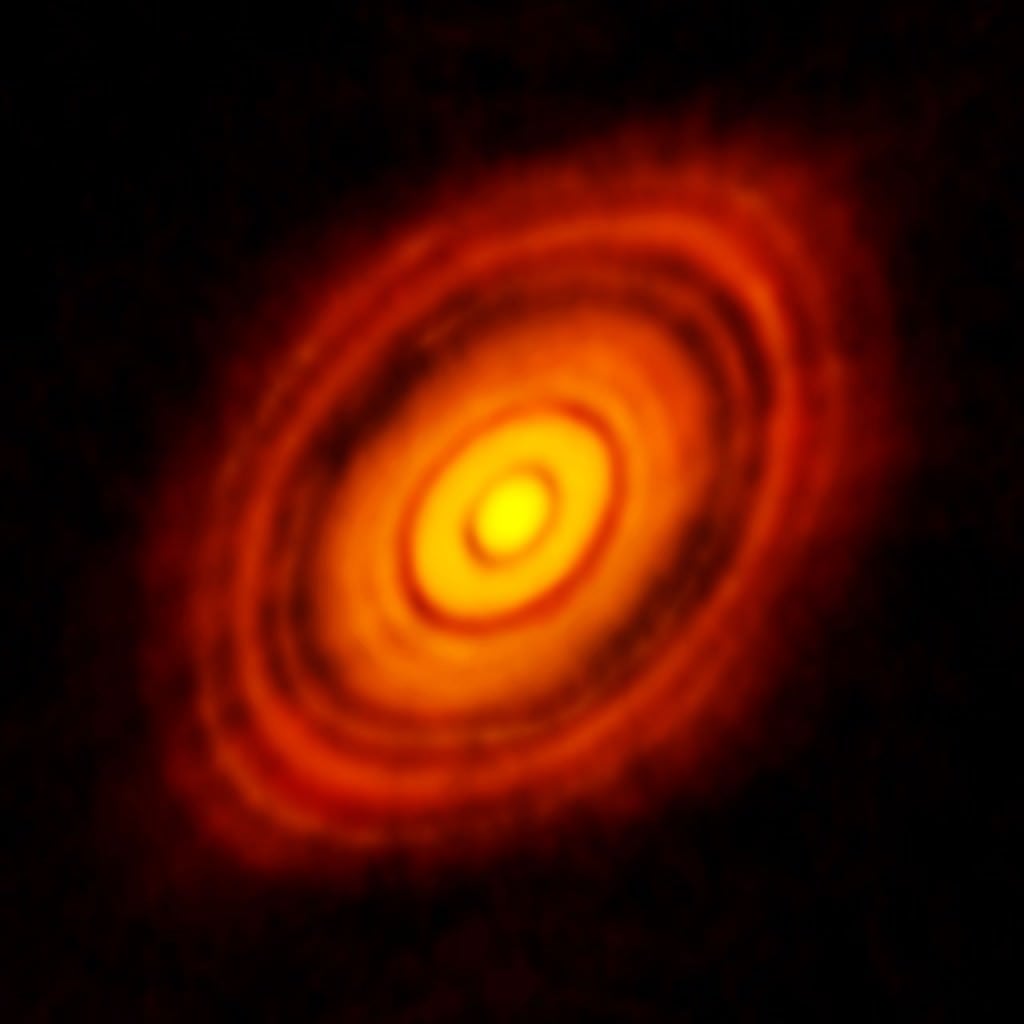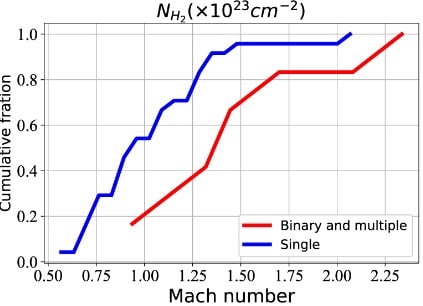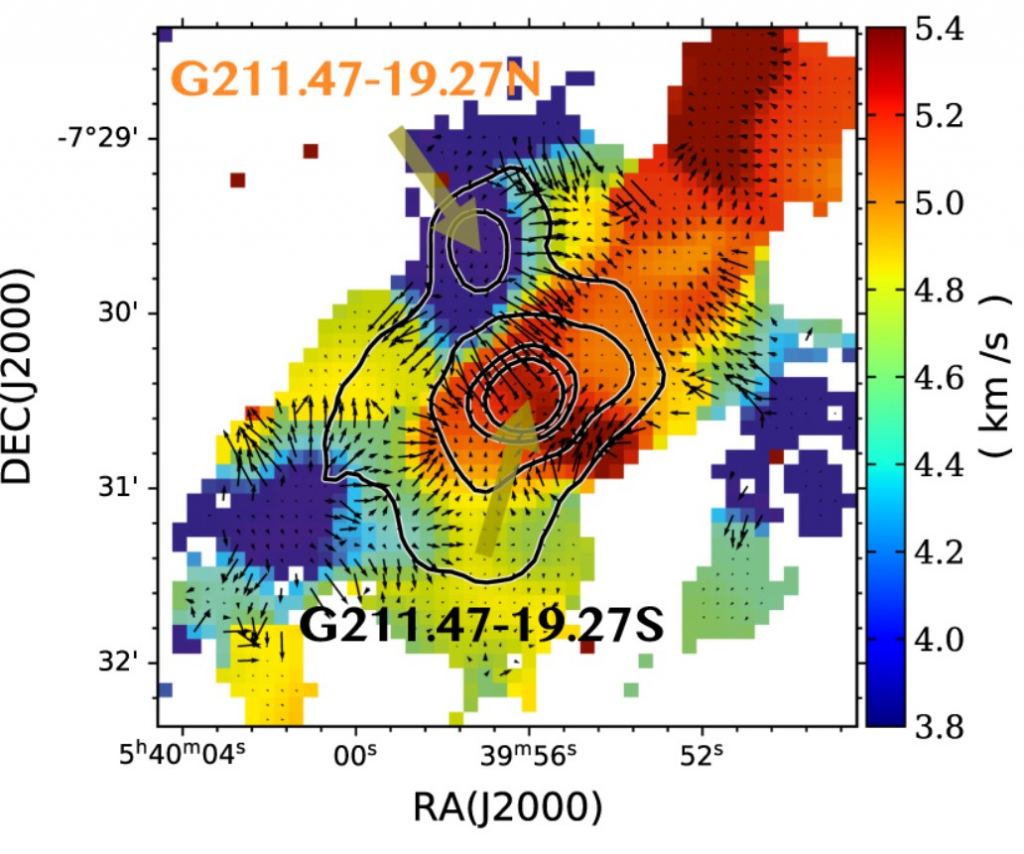Stars form inside massive clouds of gas and dust called molecular clouds. The Nebular Hypothesis explains how that happens. According to that hypothesis, dense cores inside those clouds of hydrogen collapse due to instability and form stars. The Nebular Hypothesis is much more detailed than that short version, but that's the basic idea.
The problem is that it only explains how single stars form. But about half of the Milky Way's stars are binary pairs or multiple stars. The Nebular Hypothesis doesn't clearly explain how those stars form.
Most stars about the same mass as our Sun or larger aren't single stars. Most are members of multiple star systems, especially binary stars. While the nebular theory explains how single stars form, there are competing theories for how multiple stars form.
First of all, after a molecular cloud collapses into a star, it forms a rotating disk of gas and dust around the young protostar, called a circumstellar disk. One theory explaining how multiple stars form says that a pair or more of young protostars are fragments of a parent disk that was once much larger. Another theory says that the young protostars form independently, then one captures the other in an orbital arrangement.
But when stars form inside a molecular cloud, it begins with a dense core inside the cloud. That core initiates the gravitational collapse that gathers enough gas in one place to form a star. The question is, what's different about some of those cores that cause multiple stars to form versus single stars?
That's what astronomers at Hawaii's James Clerk Maxwell Telescope (JCMT) wanted to understand.
The JCMT is a 15-meter radio telescope at Mauna Kea Observatory in Hawaii. The telescope's submillimeter observations allow it to observe the molecular clouds where stars are born. The researchers used it to observe the Orion Molecular Cloud Complex (OMCC), the closest active stellar nursery to Earth, which is still about 1500 light-years away. The OMCC contains two giant molecular clouds (GMCs), Orion A and Orion B. They also used observations from ALMA and Japan's Nobeyama Telescope.
The team watched multiple star systems forming in the Orion Complex and made important discoveries about the process. They presented their findings in a paper published in The Astrophysical Journal. The paper is " ALMA Survey of Orion Planck Galactic Cold Clumps (ALMASOP): How Do Dense Core Properties Affect the Multiplicity of Protostars? " The first author is Qiuyi Luo, a Ph.D. student at Shanghai Astronomical Observatory.
"During the transition phase from a prestellar to a protostellar cloud core, one or several protostars can form within a single gas core," the paper stars. "The detailed physical processes of this transition, however, remain unclear."
For this study, the team of researchers collected observations of 43 protostellar cores in the Orion molecular cloud complex with the JCMT. Then they used the powerful ALMA telescope to examine the interior structure of the cores.
The research shows that about 30% of the 43 dense cores form binary or multiple stars, and the remainder forms only single stars. The astronomers measured and estimated the sizes and masses of the cores. They found that binary/multiple cores have higher densities and masses, although the sizes of all the cores aren't much different.
"This is understandable," said first author Qiuyi Luo. "Denser cores are much easier to fragment due to the perturbations caused by self-gravity inside molecular cores."
From there, the team turned to Japan's 45-meter Nobayama radio telescope. They observed what's known as the N2H+ J=1-0 molecular line in all 43 dense cores. N2H+ is diazenylium, one of the first ions ever found in interstellar clouds. This molecular line is easily observed through Earth's atmosphere with fine precision. Astronomers use it to map the density and velocity of the gas in molecular clouds.
Those observations showed that dense cores that form multiple stars are more turbulent than cores that form single stars.
"These Nobeyama observations provide a good measurement of turbulence levels in dense cores. Our findings indicate that binary/multiple stars tend to form in more turbulent cores," said Prof. Ken'ichi Tatematsu, who led the Nobeyama observations.
Lead author Qiuyi Luo summarized the study's findings in a press release. "In a word, we found that binary/multiple stars tend to form in denser and more turbulent molecular cores in this study."
Co-author Sheng-Yuan Liu added, "The JCMT has proven to be a great tool for uncovering these stellar nurseries for ALMA follow-ups. With ALMA providing unprecedented sensitivity and resolution so that we can do similar studies toward a much sample of larger dense cores for a more thorough understanding of star formation."
The researchers also found that the stars in each binary or multiple arrangement are usually at very different evolutionary stages. The more evolved protostars are generally further from the center of the dense cores than their younger counterparts. This indicates that as stars evolve, they migrate out of their natal cores.
This study shows some differences between cores that form single stars versus cores that form binary and multiple stars. But it's only the beginning: there's much more to learn and many more questions.
One of the questions is what role do magnetic fields play in star formation? Star-forming clouds can be highly magnetized. Magnetic fields from the interstellar medium thread their way through star-forming clouds, and astronomers know that magnetic fields can affect the star formation rate. Do they play a role in determining if a single star forms versus multiple stars?
"We have yet to look at the effect of magnetic fields in our analysis," said corresponding author Tie Liu, who was also the lead for the ALMA observations. "Magnetic field may suppress the fragmentation in dense cores, so we are excited to focus the next stage of our research on this area using the JCMT."
The authors point out that the low sample size hampers their results. Forty-three dense cores may not be enough data to draw conclusions from, especially because they're all from the same molecular cloud. The study was also limited by the resolution of the various observatories and telescopes used in the study.
"Our results could be further tested using future higher spatial and spectral resolution observations toward a more complete dense core sample in various molecular clouds that are in widely different environments," they conclude.
More:
- Press Release: JCMT Astronomers find that denser and more turbulent environments tend to form multiple stars
- New Research: ALMA Survey of Orion Planck Galactic Cold Clumps (ALMASOP): How Do Dense Core Properties Affect the Multiplicity of Protostars?
- Related Research: The Role of Magnetic Fields in Setting the Star Formation Rate and the Initial Mass Function
- Universe Today: Nearby Supernovae Exploded Just a few Million Years Ago, Leading to a Wave of Star Formation Around the Sun
 Universe Today
Universe Today





